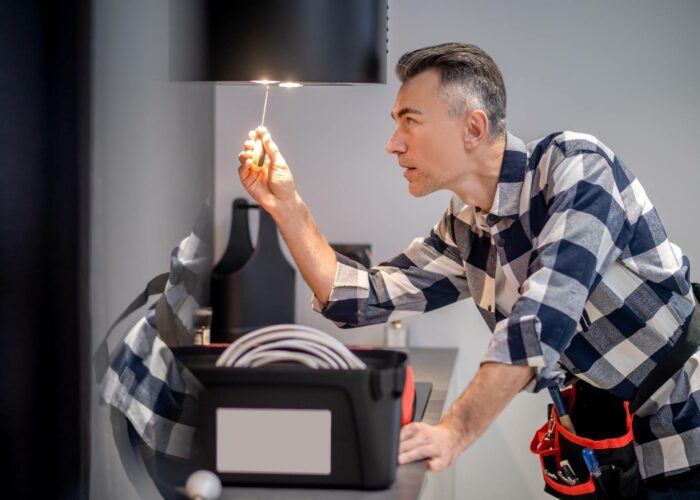Electricity powers nearly every aspect of our modern homes, yet the electrical system remains a mystery for many homeowners. Understanding the basics can help you troubleshoot problems, ensure safety, and make informed decisions about repairs and upgrades. This guide aims to demystify the core components and concepts of residential electrical systems.
Main Components of Your Home’s Electrical System
Service Drop and Meter
- Service Drop: Where electricity from the utility company enters your home, via overhead wires or underground cables.
- Meter: Usually outside, measuring your household’s electricity consumption.
Main Service Panel (Breaker Box) The heart of your home’s electrical system, distributing electricity to various circuits:
- Main Breaker: Controls power supply to the entire house.
- Circuit Breakers: Individual switches that control power to specific areas or appliances, preventing overloads by shutting off power when a circuit draws too much current.

Circuit Wiring Wires carry electricity from the breaker box to outlets, switches, and fixtures:
- Hot Wires: Usually black or red, carrying electricity from the breaker to the destination.
- Neutral Wires: Typically white, carrying electricity back to the breaker box.
- Ground Wires: Generally green or bare copper, providing a path for electrical current to safely return to the ground in case of a fault.
Outlets, Switches, and Fixtures Access points for using electricity in your home:
- Outlets (Receptacles): Where you plug in devices.
- Switches: Control the flow of electricity to lights and appliances.
- Light Fixtures: Include ceiling lights, wall sconces, and other permanent light sources.
Safety Tips for Home Electrical Systems
- Regular Inspection: Check for signs of wear and tear, such as frayed wires, scorch marks, or flickering lights.
- Know Your Breaker Box: Familiarize yourself with its layout and label each breaker.
- Do Not Overload Circuits: Avoid plugging too many high-power devices into a single outlet.
- Use Surge Protectors: Protect sensitive electronics from voltage spikes.
- Hire a Professional: For major electrical work or uncertainties, hire a licensed electrician.
Basic Troubleshooting Steps
- Power Outage in a Room: Check the circuit breaker and reset it if tripped.
- Frequent Tripping of Breakers: This could indicate an overloaded circuit or a ground fault. Redistribute heavy loads or consult an electrician if the problem persists.
- Flickering Lights: Tighten or replace the bulb. If the issue continues, check the fixture or consult an electrician.
- Burning Smell or Sparks: Turn off power at the breaker and contact an electrician immediately.
Conclusion Understanding your home’s electrical system empowers you to maintain a safe and efficient living environment. While some issues can be easily addressed, always prioritize safety and consult a professional for complex problems. With a basic grasp of how your electrical system works, you can make better decisions, troubleshoot minor issues, and ensure your home remains a safe haven for your family.
If you are looking for an expert’s advice, feel free to reach out, we will be more than happy to assist you. Write to us at bd@ilaj.ae or call us at 600 562624
